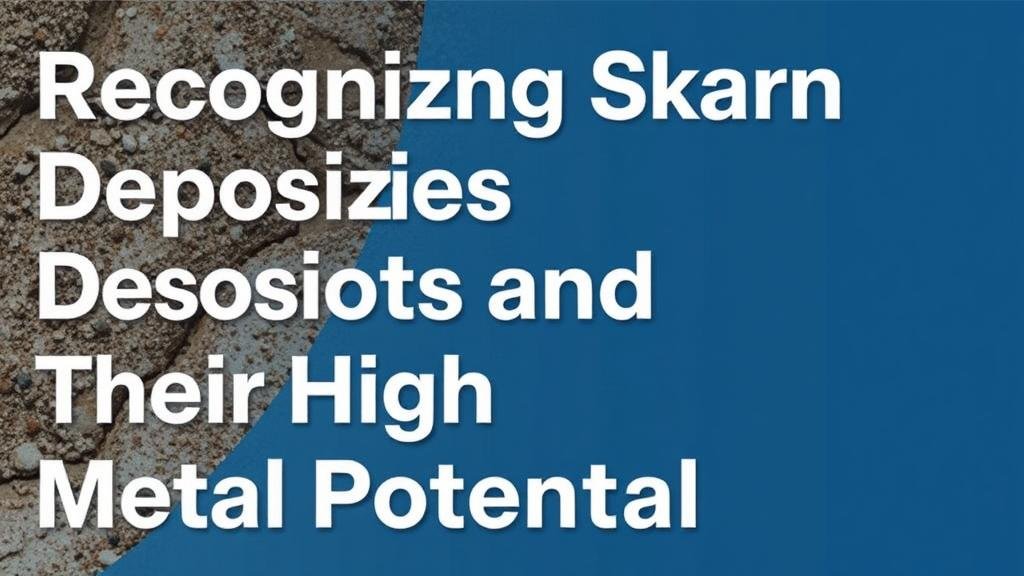Recognizing Skarn Deposits and Their High Metal Potential
Recognizing Skarn Deposits and Their High Metal Potential
Skarn deposits are economically significant geological formations that form at the interface between igneous intrusions and sedimentary rocks. These deposits are characterized by a diverse range of minerals and often contain valuable metals such as copper, tungsten, and precious metals like gold and silver. This article provides an in-depth analysis of skarn deposits, their recognition criteria, and their importance in the mining industry.
Formation of Skarn Deposits
Skarn deposits typically form as a result of hydrothermal processes related to the intrusion of magma into limestone or dolostone. contact between the hot magma and the carbonate rocks initiates a series of metamorphic and chemical reactions, leading to the alteration of the original rock and the precipitation of new minerals. This process can be explained through the following key stages:
- Intrusion of magma, leading to the formation of high-temperature fluids.
- Diffusion of these fluids into the surrounding carbonate rocks, resulting in the metamorphism of the rock.
- Subsequent precipitation of economically valuable minerals due to changing pressure and temperature conditions.
Examples include the skarn deposits found in the Tyrone mine in New Mexico and the Cananea mine in Mexico, both of which demonstrate a rich mineral assemblage indicative of skarn formation processes.
Characteristics of Skarn Deposits
To effectively recognize and assess skarn deposits, geologists look for specific characteristics that distinguish them from other types of mineral deposits. These characteristics include:
- Mineral Composition: Common minerals found in skarn deposits include garnet, pyroxene, and epidote. presence of these minerals can indicate high-grade ore bodies.
- Texture: Skarn rocks often exhibit a distinctive banded texture due to the layering of different mineralogical phases resulting from the alteration process.
- Alteration Patterns: The zoning of alteration minerals can provide insights into the temperature and pressure conditions during formation.
For example, a notable example is the skarn deposit at the Old Dominion mine in Arizona, where garnet and diopside serve as key indicators of the mineral potential of the site.
Economic Significance of Skarn Deposits
The economic significance of skarn deposits cannot be overstated. These formations are often hosts to copper, gold, and other metals that are critical to modern industry. According to the U.S. Geological Survey, the global copper demand is expected to reach 25 million metric tons per year by 2030, underscoring the importance of skarn deposits as reliable sources of this essential metal.
Plus, case studies illustrate the profitability of mining skarn deposits:
- Cananea Mine, Mexico: One of the worlds largest copper mines, where skarn deposits account for significant portions of copper production.
- Las Bambas, Peru: Another significant mining operation where skarn formations contribute to the high-grade copper yield.
Exploration Techniques for Skarn Deposits
Recognizing skarn deposits requires a combination of geological mapping, geophysical surveys, and geochemical analyses. The exploration process can be broken down into several key techniques:
- Geological Mapping: Detailed surveys to identify rock types and structural features.
- Geophysical Methods: Techniques such as magnetic and resistivity surveys to detect mineralization and assess the extent of skarn formations.
- Geochemical Sampling: Analyzing soil and rock samples for pathfinder elements that signal the presence of valuable metals.
The efficiency of these techniques has been demonstrated in various mining operations, leading to the successful identification and exploitation of skarn-related mineral resources.
Challenges in Mining Skarn Deposits
Despite their high metal potential, mining skarn deposits presents unique challenges. These include:
- Complex Geology: The heterogeneous nature of skarn deposits can make ore body delineation difficult.
- Environmental Concerns: Mining activities can lead to significant environmental impacts that must be managed effectively.
- Economic Viability: Fluctuating metal prices can affect the feasibility of extracting resources from lower-grade skarn deposits.
Addressing these challenges involves implementing advanced mining technologies and sustainable practices to ensure both profitability and environmental stewardship.
Conclusion
Skarn deposits represent an important source of various metals critical to global industries. r recognition and understanding require a comprehensive approach involving geology, chemistry, and mining expertise. With the continuing demand for metals like copper and gold, skarn deposits will remain a vital focus for exploration and mining efforts in the years to come.
In summary, recognizing skarn deposits involves an understanding of geological processes, characteristics of mineral composition, and advanced exploration techniques. As the mining industry faces both economic and ecological challenges, leveraging the potential of skarn deposits sustainably is crucial for future resource management.



